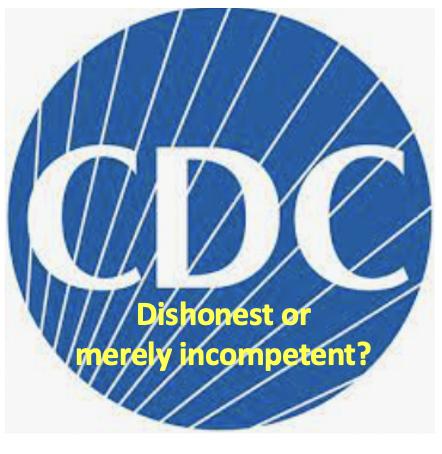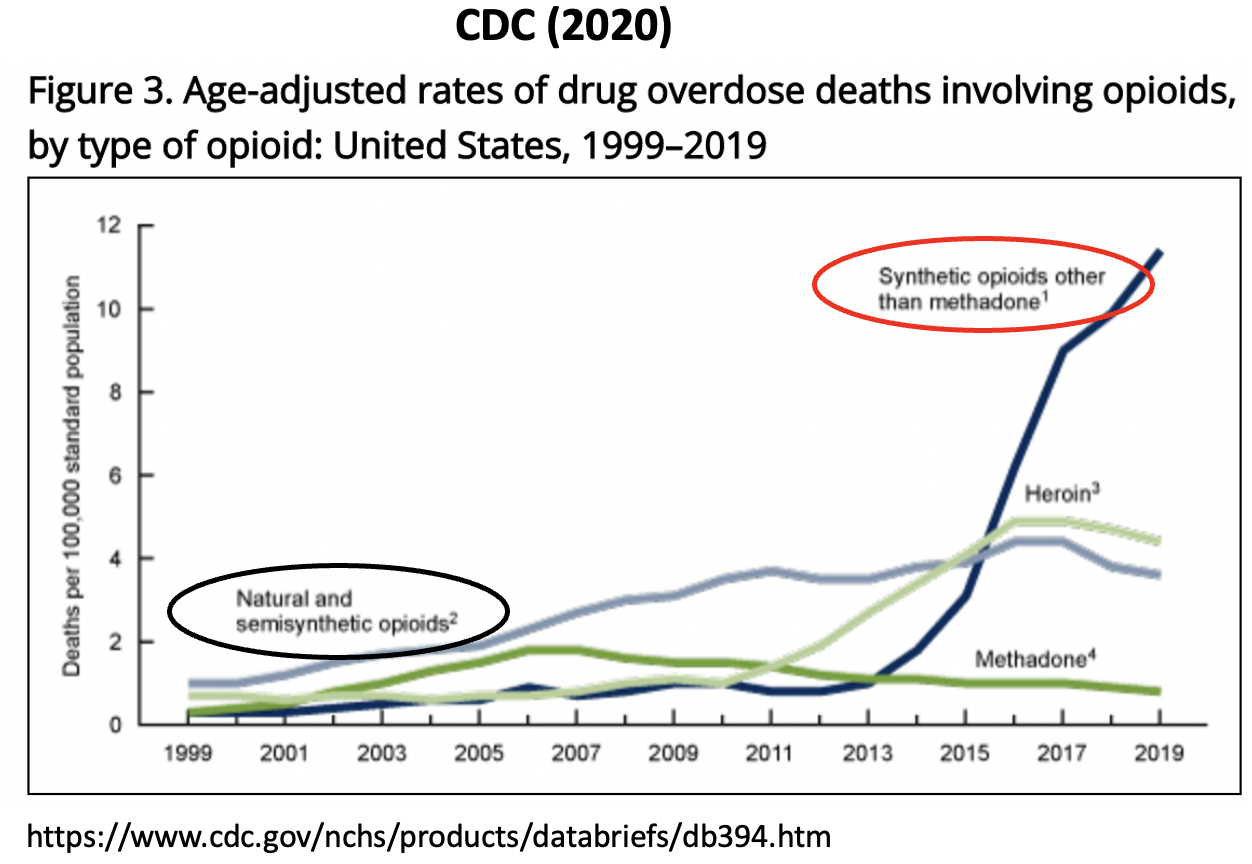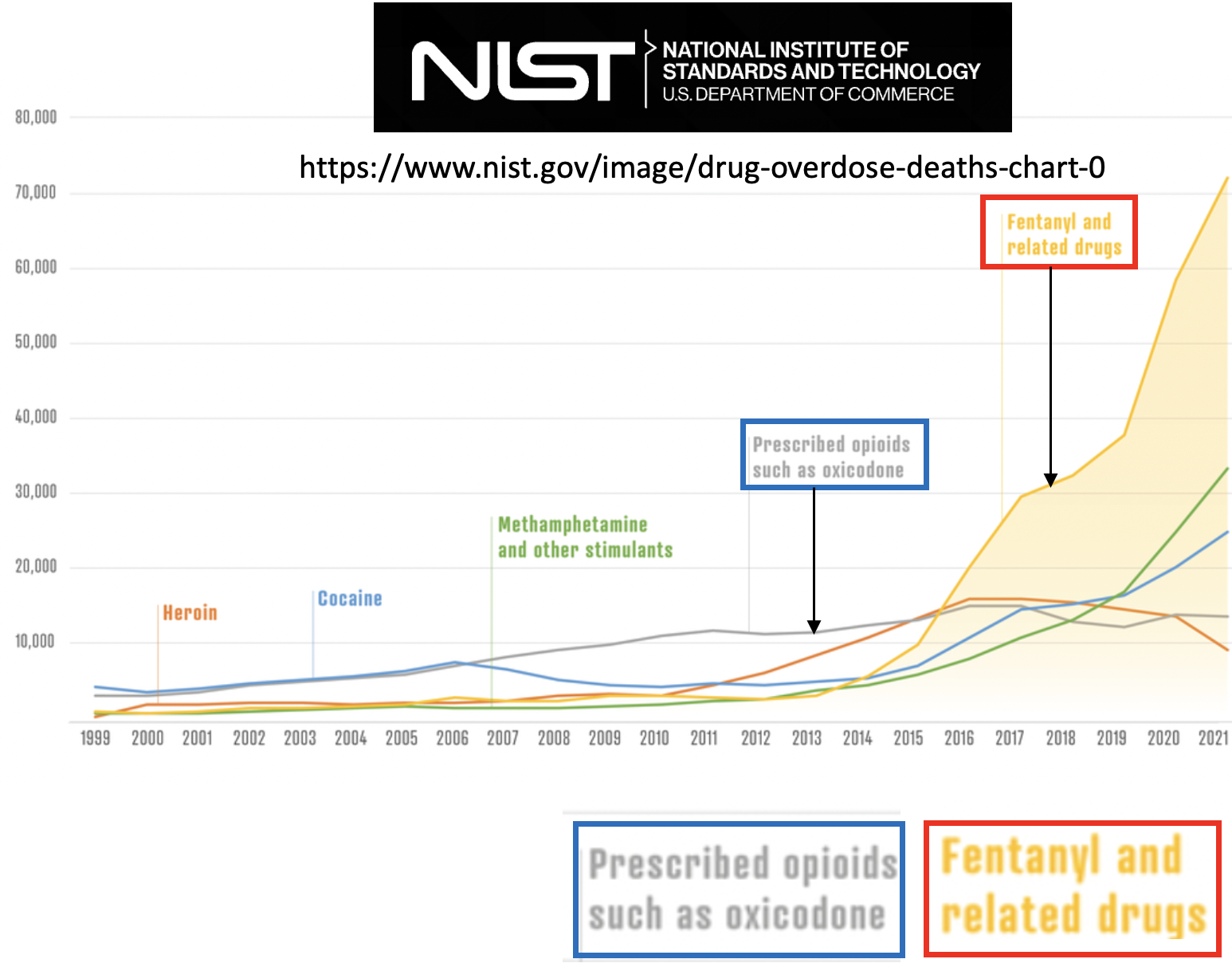
The role of the CDC in categorizing opioid drugs
Relatively safe prescription analgesics have become next to impossible to get, regardless of medical need, while far more dangerous street drugs are pouring into the US. Yet the CDC, arguably the primary offender in the anti-opioid movement still maintains significant control of the national conversation on opioid addiction and death. Even though we are years into the "Fentanyl Epidemic" the agency, intentionally or otherwise, still obfuscates overdose death data as you'll see in the graph below. Why? It could just be sloppy science or it could also be intentional, possibly to minimize the public perception of the harms that its CDC Guideline for Prescribing Opioids for Chronic Pain — United States, 2016 caused. But, as you'll see shortly, another government agency has, intentionally or otherwise, cleared up the confusion by simply relabeling a part of a graph.
I could not adequately cover the 2016 Prescribing Guidelines in 10 articles, so let's focus on a single, but important error – the language used in establishing the categories. What does it mean? What are these categories of drugs that are allegedly doing so much harm to those who take them?
Language can be a powerful tool, especially when misused. Let's focus on the definitions of two of the drug categories, something I've written about before (See Stop Calling Fentanyl A Synthetic Opioid. It's Confusing). It's a form of "narcotic gaslighting," where the blame for opioid overdoses remains focused on prescription pills, in language which is difficult to understand unless you're an organic chemist.
The CDC graph - one problem after another

Figure 1. CDC graph of different drugs responsible for overdose deaths. In some language or other. Pay attention to the terms in the two ovals.
This article is focused on two classifications of drugs, "natural and semisynthetic opioids" and "synthetic opioids other than methadone." Both terms are scientifically inaccurate; neither term provides any useful information defining which drugs are the killers. Let's take a look.
In the CDC graph (above), the black oval highlights one of the categories, "natural and semisynthetic opioids," (referring to the light blue line) – the number of deaths from this bewildering term. What does it even mean? Unless you happen to understand "CDCese" you can't possibly know; the term tells us nothing about the drug; not its potency, dosage, or addiction potential. Instead, the category encompasses "natural" opioids (as if that matters) that happen to be "semisynthetic," whatever that means.
- "Natural"
The term "natural" is both irrelevant and also confusing when referring to overdose deaths. It is thoroughly meaningless, yet also misleading, taking advantage of the popular misconception that natural drugs and chemicals are in some way superior or safer than synthetic ones. This is absolutely false. The origin of a drug (or chemical) is irrelevant; its properties are determined by the chemical structure of the drug itself, not whether it happens to be derived from plants, animals, or petrochemicals. Examples of "natural" opioids include codeine and morphine. They are found in poppy flowers. So what? Whether made by a flower or in a factory doesn't matter one bit. So, why use this term? It is confusing and also misleading. (For an esoteric exercise about the meaning of "natural," see Note 1. If you dare)
- "Semisynthetic"
The term "semisynthetic" is even worse; it refers to drugs that are not found in living organisms but are synthesized from other chemicals or drugs that are. Very few non-chemists would understand what this really means. Drugs in this class include oxycodone and heroin (2); neither is found in poppy but both are made from ingredients in poppy. And, just like the term "natural," "semisynthetic" tells us nothing about the drugs, only that they were manufactured from natural ingredients in poppy. Absolutely useless information.
- The worst of the worst: "Synthetic opioids other than methadone"
If the nonsense about natural vs. semisynthetic is bad, the terminology used for characterizing the opioid drugs that didn't have the good fortune to be created by a plant is even worse. "Synthetic opioids other than methadone?" What does this even mean? It means nothing. Why? There are two drugs shoved into this category: Fentanyl (the strongest common opioid) and tramadol (the weakest). These two drugs don't even belong in the same room (or the same medicine cabinet) yet they appear in the same category.
Why? Here's my guess. Doing this served a purpose – to downplay the significance of fentanyl deaths (note that fentanyl is not even mentioned) thereby keeping the focus on prescription pills for any number of reasons. (3)
Language matters
The CDC chose to represent drugs that caused overdose deaths using these meaningless classes. Why? These terms make it next to impossible for your average citizen to understand which drugs are responsible for what. To the American public, overdoses are caused by nondescript white pills. Both the CDC used these fuzzy definitions (in my opinion) to obscure the fact that by the mid-2010s street drugs (heroin and Illicit fentanyl) were becoming the primary killers, passing the number of deaths from legal prescription opioids, a trend that would only accelerate with time. The "intentional fuzziness" worked so well that it was difficult (even for physicians) to understand that the opioid overdose crisis had fundamentally changed. Prescription pills were no longer the primary danger. Not even close.
Clarity from a strange place
Let's look at a slightly different way to present the same data – accurately. The graph below was put together by the National Institute of Standards and Technology (NIST), a subsidiary of the US Department of Commence (2) based entirely on CDC data. There are two seemingly trivial changes in how the data are presented. But those two changes make a world of difference (Figure 2). They actually tell us the truth about the opioid crisis.

Figure 2. Overdose deaths by drug – clearly and accurately portrayed. "Semi-synthetic opioids" has been replaced by "prescribed opioids, such as oxicodone [sic]. The category formerly titled "Synthetic opioids other than methadone" is now "fentanyl and related drugs." Quite a difference. Both of these categories are now clearly defined. Credit: B. Hayes/NIST (March, 2021) based on data from U.S. Centers for Disease Control and Prevention
Small changes make a big difference
As mentioned above, the category "synthetic opioids other than methadone" has been replaced by "fentanyl and related drugs. 'This is not a trivial change. Finally, someone can look at this graph and see quite clearly what is killing Americans – illicit fentanyl and its analogs.
And the term "natural and semisynthetic opioids" is mercifully gone. It meant nothing in the first place, but its replacement does. The meaningless term has been replaced by an accurate one: "Prescribed opioids." This include drugs like oxycodone, hydrocodone, and hydromorphone. All of a sudden it becomes very easy to look at CDC data and see what is really going on.
What is especially galling is that the CDC could have made this simple change a decade ago, but the result would have been a far greater understanding of what constitutes the "opioid crisis" – probably something that the CDC had little interest in clarifying.
Incompetence? Sleight of hand? Honest mistake?
You tell me.
NOTES:
(1) But just to screw with your head: There isn't much codeine in the flower, so industrially it is synthesized from morphine or thebaine, two other components of the flower. Does this make it natural? Yes. Or maybe no. You decide.
(2) If you're wondering why the US Chamber of Commerce is now weighing in on something that is very far from its mission you are not alone. Then again, drug policies should have never been determined by the CDC; it knows nothing about drugs, something that should be quite obvious by now.
(3) There's an awful lot of money to be made by "expert" witnesses who demonize legal opioids in shoddy papers and propaganda-like seminars. Then they pedal their "expertise" to work with lawyers, who seek huge settlements from opioid manufacturers and distributors, regardless of whether they did anything wrong or not. (See PROP Keeps Lying About Opioids - This Time They Got Caught.)



